Lillian Gish Withstands Title Element In Late Silent Masterpiece
1928/DIRECTED BY VICTOR SEASTROM (Sjöström)
PRESENTED: March 7th, 2019/CAPITOL THEATER, OVERTURE CENTER
ORGANIST: Jelani Eddington
In a special showing of a film released the same year Overture Center’s Capitol Theater first opened (1928), Duck Soup Cinema presented one of the last great silent films from a rare print stored and preserved by the Academy Archives (Academy of Motion Picture Arts and Sciences). As accompanied by the venue’s Grand Barton organ, organist Jelani Eddington’s film-length score — derived from original and compiled musical themes — roared through the 91-year-old theater in as unrelenting manner as the constantly swirling earth-and-dirt onscreen. The Wind, title and element, is impossible to forget or ignore in possibly the screen’s most harrowing depiction of its destructive force and effects.
Adapting Dorothy Scarborough’s 1925 source novel, controversial in its day for its unsparing descriptions of West Texas cattle ranching practices, the MGM-produced film, written by the prolific Frances Marion and directed by pioneering Swedish filmmaker Victor Sjöström (credited in his post-1924 Hollywood films as “Seastrom”), stars Lillian Gish in her final silent film role. As Letty Mason, Gish’s familiarly fragile and frightened characterization — the apotheosis of a terror-and-terrorized screen persona stretching clear back to her 1912 film debut, opposite sister Dorothy, in D.W. Griffith’s An Unseen Enemy — finds its greatest elemental challenge under the searing desert blast of the northwestern wind. Cyclones, gales, and blowing sands; The Wind whips story and character into a screen frenzy of psychosexual melodrama amid nature’s indomitable dominion.
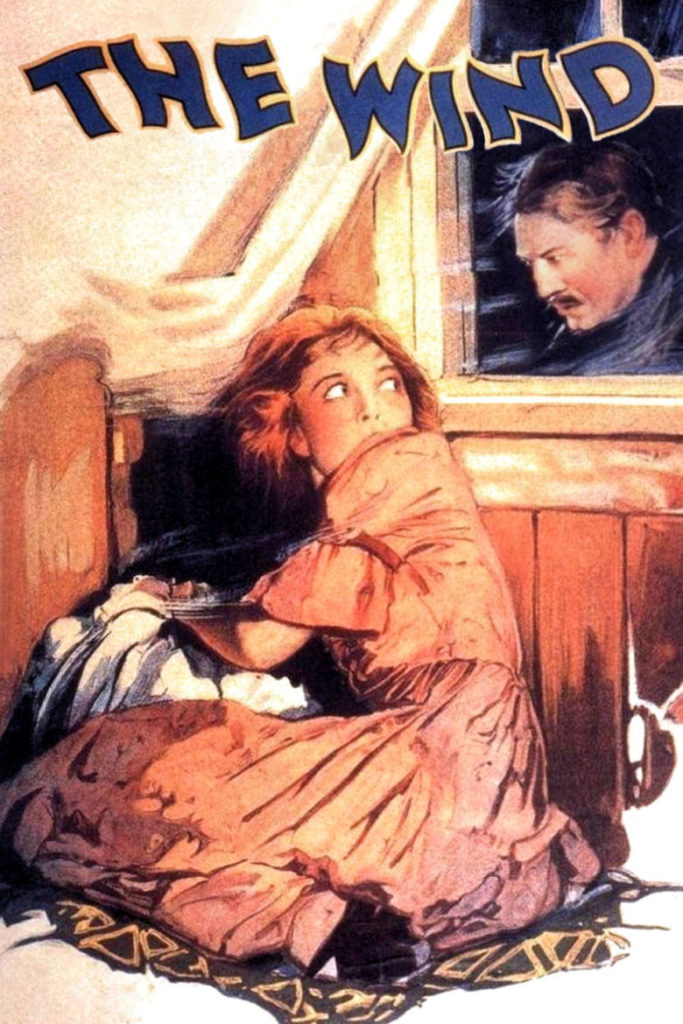
Opening on Letty’s train-travel Southwest from her home in Virginia, she encounters the forward and aggressive cattle rancher Wirt Roddy (Montagu Love) before arriving in sand-blinding Sweetwater, Texas. Buggy-transported to her new home by rough-hewed cowboys Lige Hightower (Lars Hanson) and Sourdough (William Orlamond) — who shoot for the privilege of riding next to her — Letty soon finds herself an unwitting pawn at her ranch-house destination in an ongoing battle of possessiveness and jealousy between her easygoing yet sickly cousin Beverly (Edward Earle) and his dour, unstable wife Cora (Dorothy Cumming). Escaping the scene of domestic strife by marrying the less objectionable of the cowhand pair, Lige — whom Letty does not love — the hasty union soon erodes past the point of reasonable tolerance — frustrated desire on his part and repressed sexuality on hers — even as the hot desert wind continues to ride roughshod over the scorched (and scorching) earth outside their small cabin.
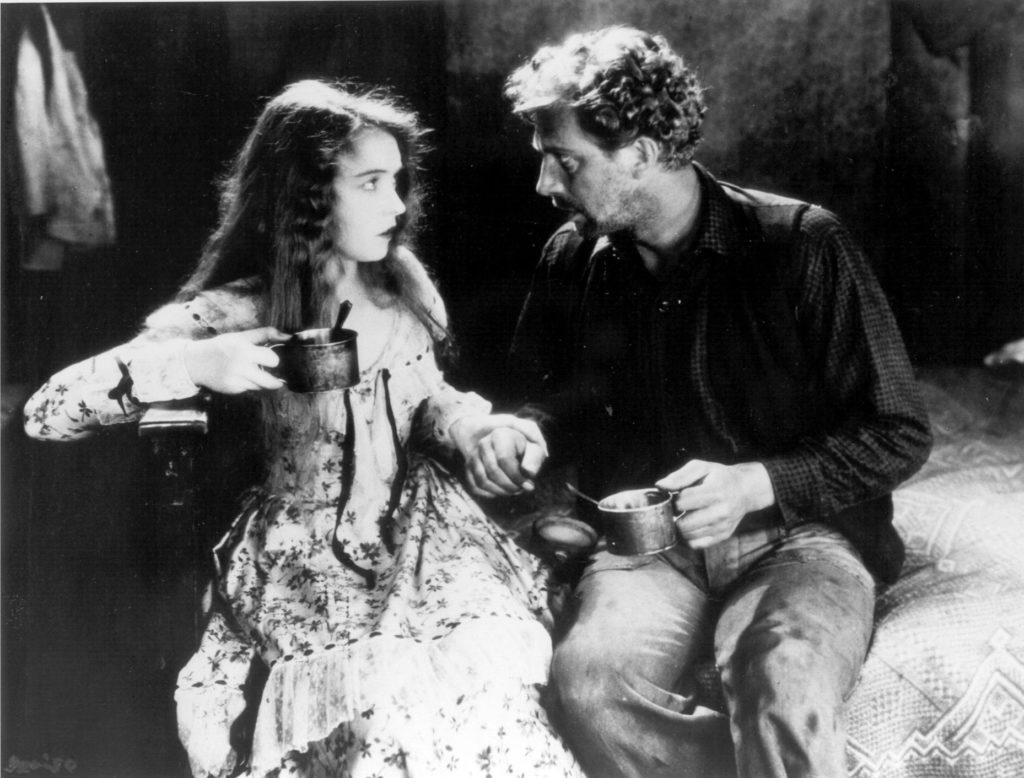
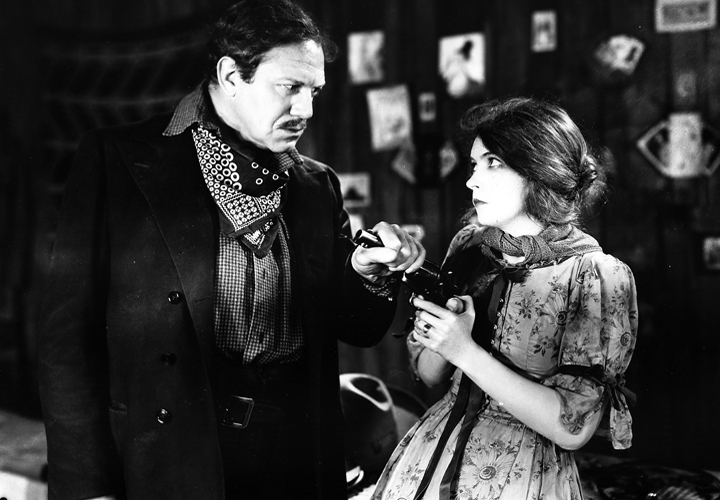
Answering the emergency (and economic opportunity) of escaped cattle and wild stallions running through the canyon, Letty is left alone with the recently rescued (and recuperating) Wirt Roddy, who takes advantage of Lige’s absence and Letty’s increased vulnerability to attack (and offscreen rape) the wind-tortured new bride. Driven near-mad by the inhospitable environment and brought to the very brink of sanity by her sexual trauma, Letty takes (justifiable) revenge on her attacker with his discarded pistols the next morning, burying his body in the ever-shifting sands outside the cabin. Although the buried body of Letty’s attacker seems to be uncovered by her other, more elemental enemy, a returning Lige — to whom Letty tacitly confesses her desperate act — assures his now self-possessed, newly-strengthened, and even love-found wife that the nor’wester’ has a sense of concealing justice all its own.
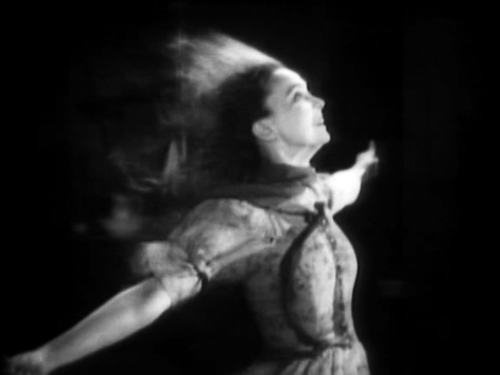
The somewhat incongruous Happy Ending may weaken aspects of this otherwise complex and powerful story, but The Wind nevertheless finds its greatest strength in its audience-involving portrayal of Letty’s deteriorating mental state. Lillian Gish’s expressions of terror as the wind rushes in a constant flow against glass panes, the hellish landscape reflected in her eyes framed by both the screen and window, communicates the powerlessness of her character’s position as effectively as the film’s larger depiction of human beings terrorized by a hostile environment. Without and within, the unleashed forces of nature — as realized by Mojave Desert-shot location footage and by MGM’s peerless special effects and miniatures team — alongside the internal turmoil of equally inexorable psychological forces — as realized by Sjöström’s/Seastrom’s brilliantly-assured direction and Gish’s effectively performative screen histrionics — combine to imbue The Wind with a screen-quality approaching the darkest visions of dream.
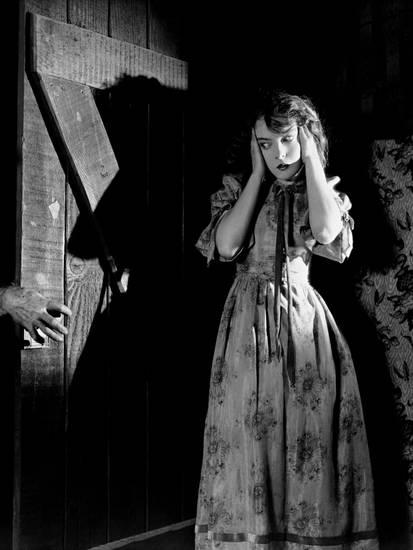
The European Diaspora of filmmakers and performers brought many talented artists to Hollywood during the 1920’s, among them director Sjöström and co-star Hanson; Swedish countrymen who had previously brought a stark Scandinavian sensibility as director and co-star to Lillian Gish in their combined 1926 adaptation of Nathaniel Hawthorne’s The Scarlet Letter. Here, with similarly pitiless intensity, The Wind expands upon the suffering and cruelty typically visited upon Ms. Gish’s innocent screen persona, lifting the Victorian waiflike victimhood from 1922’s Way Down East, say, to the level of Modern Art. The Wind, title and element again, is everywhere, and like a simultaneous infection of environment and mind brings Letty from the brink of screen reality onscreen to the realm of nightmare beyond.
As with the paintings of Edvard Munch, the dramatic works of August Strindberg, and the then-current theories of Sigmund Freud, visual passages fusing surface naturalism with inner emotion — Letty’s rejection of Lige, Lige’s frustrated advances, Letty’s mental withdrawal — become indistinguishable from terror conveyed by environmental forces — a black cyclone on the horizon bringing death and destruction — similarly beyond the characters’ control. In performance and direction, The Wind is both a straight-forward presentation of actual conditions in drought-scourged West Texas alongside an inner portrait of the tortured psychology of a ravished virgin. A great screen advance in artistry that was soon effectively halted by the addition of sound also set back, possibly permanently, the promise of true Screen Modernism in commercial filmmaking.
Departing from the usual silent screen fare of the always-welcome Buster Keaton or Harold Lloyd — the latter of whom will round out this season’s series with two showings on April 14th of his first feature film, Grandma’s Boy (1922) — Duck Soup Cinema has continued last year’s similar special showing of another late silent screen masterpiece in F.W. Murnau’s Sunrise (1927). Reminding modern audiences that this late artform was far from naïve, having as rich and varied a tradition as the sound-form that succeeded it, The Wind showed the silent medium reaching a pinnacle in form and expression that would not be matched again until well into the next decade of feature filmmaking. And in one respect, at least, The Wind and its dramatic contemporaries would never be matched: with a sophistication of thought and expression, the conscious and subconscious melding of imagery and performance — like canyon dust piling ceaselessly against a weather-beaten cabin; penetrating every nook and cranny of living space — joined with a pure force of seeing in the late silent era for a form of artistry not unlike visual music.

